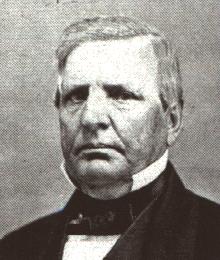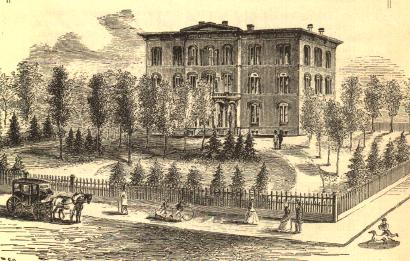|
Anson Brown was a fairly wealthy land
owner. His properties were north of the Huron River in a
region called Lower
Town. Brown was constantly
competing with the people of the downtown area which he
referred to as "the hilltoppers." Lower Town was not in the
original plat of Ann Arbor, so it was technically a separate
village. Brown had a vision to make Lower Town just as
prosperous as "the hill," but he had trouble getting
settlers to move to Lower Town despite the fact that the
land was considerably cheaper there. One important reason
for his difficulty was the mail. Mail came from Detroit and
was delivered in Ann Arbor. Consequently, people wanted to
live near Ann Arbor. Later, a post office was to be built and Brown persuaded officials to build it in
Lower Town. This was quite a victory,
and population
started to increase in the area.
Soon, a railroad was to be built there as well.
|
|
|
|
James Kingsley was the first attorney of Ann Arbor and a
well-respected citizen. In 1828, he was elected judge of the
probate court. In 1837, he was in the Lower House of the
State Legislator and eventually State Senator. Most
importantly, Kingsley was always devoted to Ann Arbor, and
was instrumental in bringing education to the forefront of
the community as a regent of the University of Michigan.
Initially, education was difficult for the settlers. Schools
would be founded, but the average life span of these
institutions was about two years as most citizens could not
afford to send their children to these schools.
|
|
The village council began building public schools, and
later built one of the costliest buildings in the state, the
Union School, later renamed Ann Arbor High.
|
|
The single most important event in Ann Arbor's history,
and what will forever intertwine the city with education,
occurred in 1837 when Ann Arbor was chosen as the new site
of the state university. The price for such an honor was
forty acres of land the village council was more than
willing to give. The State Journal wrote: "Our village, we
trust, is destined to be the pride and ornament of Michigan"
.
|
|
The addition of the University of Michigan to Ann Arbor
changed how the city operated. The people of the city began to take
pride in the university and in Ann Arbor as a place for scholars.
However, they did not want certain aspects of university life
affecting their community. To combat drunken students╣ presence in
the streets, for example, ordinances were passed prohibiting the sale
of alcohol to students. There was also an ordinance prohibiting
saloons from operating on Sundays. The town felt they had a great
interest in the university because the university affected their
livelihood, such as housing and trade. "That in the prosperity of the
university depends, in a great degree, the prosperity of our village;
and hence it is not only our right but our duty to look to the manner
in which its affairs are managed" (Michigan Argus).
|
|
|
|
A glorious day came when in 1851 George Sedgwick brought
news that Ann Arbor had officially become a city. Great celebration
followed as the townspeople were so happy, and Sedgwick became
the first mayor of Ann Arbor.
|


